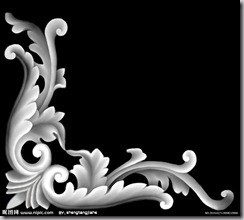常用操作
合成 Image.blend(i1,i2,a)/Image.composite(i1,i2,mask)
缩略图 thumbnail(size,filter=None)
Modifies in-place,Preserves aspect ratio
>>> myImage.thumbnail ((128, 128), Image.ANTIALIAS)
剪切 crop(bbox)
>>> bounds = (100, 100, 400, 400)
>>> cutoutIm = myImage.crop (bounds)
粘贴 paste(i2,where,mask=None)/paste(color,box=None,mask=None)
旋转 rotate(theta)
rotated around its center
翻转旋转 transpose(method)
ROTATE_90/180/270(clockwise), FLIP_TOP_BOTTOM(horizontal), FLIP_RIGHT_LEFT(vertical)
>>> fixedIm = myImage.transpose (ROTATE_90)
The Image Module
The Image module provides
- a class with the same name which is used to represent a PIL image.
- The module also provides a number of factory functions(including functions to load images from files, and to create new images)
图像对象 Image – from file or newly created
所有的图片操作必须有一个操作对象,例如Pil提供open(filename)进行这个过程,此后,一切关于图片的操作均基于这个对象。有以下几种创建image对象的方式:
1 Image.open(f)
>>> import Image
>>>
>>> Im = Image.open("lena.jpg")
>>> print Im.mode,Im.size,Im.format
RGB (256, 256) JPEG
>>> Im.show()
如果文件不能打开,会抛出IOError异常。
可以查看image对象的format,mode,size,palette,info几个属性。
调用im.show()会在图片查看工具中显示当前操作的image对象。
标准版本的show方法的实现不太高效,因为它先把image保存到一个临时文件,然后调用xy工具来显示图像。如果你没有安装xy,那么它就无法工作了。不过如果它可以工作,倒还是非常方便用来debug和测试。
2 Image.new(mode,size,color=None)
color的默认值是黑色,这里我们新建一个红色的图像。
>>> newIm = Image.new (“RGBA”, (640, 480), (255, 0, 0)) #新建一个image对象creating images from scratch
3 Image.blend(i1,i2,a) -- (p1 x (1 - a) + p2 x a)
选一张灰度图(L)做背景,和雷娜图(RGB)做blend操作
>>> Im2 = Image.open("background.jpg").convert(Im.mode)
>>> Im2 = Im2.resize(Im.size)
>>> Im2.show()
>>>
>>> img = Image.blend(Im,Im2,0.2)
>>> img.show()
操作完毕后save(filename)用以保存这个临时的image对象img到硬盘。
4 Image.composite(i1,i2,mask) --equal-sized images i1 ,i2 and mask("1", "L", or "RGBA") (p1 x (1 - m) + p2 x m)
5 Image.eval(f,i) -- applying a function f to each pixel of image i
6 Image.merge(mode,bandList) --Creates a multi-band image from a sequence of single-band images of equal size
以下是Image对象的全部方法:
| save(f,format=None) | 保存 | 如果f是一个file对象,必须指定format(format codes) |
| convert(mode) | 转换mode | |
| copy() | ||
| crop(bbox) | 剪切 | 原图中bbox区域 |
| filter(name) | 滤镜 | the name of predefined image enhancement filters 滤镜名字需要import ImageFilter |
| getbands() | 通道的字符串序列 | 如RGB图返回('R', 'G', 'B') |
| getbbox() | 包含非零区域的最小bbox | |
| getextrema() | 最大最小像素点值 | min&max pixel value 单通道图:返回元组(min,max) 多通道图:返回各个通道的元组组成的元组 |
| getpixel(xy) | 取像素点值 | 坐标xy处的pixel value or a sequence of pixel values |
| histogram(mask=None) |
统计直方图 |
单通道图:返回列表[c0, c1, ...],ci是值为i的像素数 多通道图:a single sequence that is the concatenation of the sequences for all bands mask参数:a same-sized mask image of mode "1" or "L"(include only those pixels correspond to nonzero pixels in the mask argument) |
| offset(dx,dy=None) |
平移 |
Returns a new image the same size as the original, but with all pixels rotated dx in the +x direction,and dy in the +y direction. If dy is omitted, it defaults to the same value as dx. |
| paste(i2,where,mask=None) | 粘贴图片 | where参数可以是 1 (x,y)坐标对:i2的像素点(0,0)对齐原图中的(x,y)粘贴,i2超过原图边界的部分被抛弃 2 bbox:i2必须和该bounding box大小一致 3 None:i2必须和原图大小一致 如果i2的mode和原图不一致,粘贴前会被转换。 mask参数:a same-sized mask image of mode "1","L" or “RGBA ”(control which pixels get replaced) |
| paste(color,box=None,mask=None) | 填充颜色 | 如果box省略,整个图被填充为color色;mask参数同上 |
| point(function) | 改变像素点(函数) | Returns a new image with each pixel modified. |
| point(table) | 改变像素点(查表) | To translate pixels using a table(a sequence of 256n values, where n is the number of bands in the image) lookup |
| putalpha(band) |
改变alpha通道 |
The pixels of the band image(same-sized,"L" or "1") replace the alpha band(A) of the original image(RGBA) in place. |
| putpixel(xy, color) | 改变单个像素点颜色 | Note that this method is relatively slow. For more extensive changes, use paste or theImageDraw module instead. |
| resize(size,filter=None) | 调整大小 | |
| rotate(theta) |
旋转(围绕图片中心) |
Any pixels that are not covered by rotation of the original image are set to black. |
| show() |
显示图片 |
On Unix systems, this method runs the xv image viewer to display the image. |
| split() |
分离通道 |
返回各个通道的灰度图组成的元组 |
| thumbnail(size,filter=None) | 缩略图 | Modifies in-place,Preserves aspect ratio |
| transform(xs, ys, Image.EXTENT, (x0,y0,x1,y1)) |
Returns a transformed copy of the image. In the transformed image, the point originally at (x0,y0) will appear at (0,0), and point (x1,y1) will appear at (xs, ys). |
|
| transform(xs, ys, Image.AFFINE, (a,b,c,d,e,f)) | affine变换 |
The values a through f are the first two rows of an affine transform matrix. |
| transpose(method) | 翻转旋转 | ROTATE_90/180/270(clockwise), FLIP_TOP_BOTTOM(horizontal), FLIP_RIGHT_LEFT(vertical) |
The ImageDraw Module
支持2D图像 The ImageDraw module provide basic 2D graphics support for Image objects.
It can for example be used to
- create new images,
- annotate or retouch existing images, and to generate graphics on the fly for web use.
For a more advanced drawing library for PIL, see The aggdraw Module.
创建绘画对象 ImageDraw module creates drawing surface for image
import Image, ImageDraw
im = Image.open(“vacation.jpeg")
drawSurface = ImageDraw.Draw(im)
基本绘画操作 Basic methods of drawing surface
- 弧/弦/扇形 chord arc pieslice (bbox, strtAng, endAng)
- 椭圆 ellipse (bbox)
- 线段/多段线 line (L) draw.line(((60,60),(90,60), (90,90), (60,90), (60,60))) #draw a square
- 点 point (xy) #单像素点很小看不清,实际中可用实心小圆代替
- 多边形 polygon (L) draw.polygon([(60,60), (90,60), (90,90), (60,90)]) #draw a square
- 矩形 rectangle (bbox) # first coord属于矩形, second coord不属于
- 文字 text(xy,message,font=None) 绘制文字message,文本区域左上角坐标为xy
drawable.text((10, 10), "Hello", fill=(255,0,0), font=None) - 文字大小 textsize(message,font=None) 给定文字message,返回所占像素(width,height)
可选参数 Common optional args for these methods
- fill=fillColor
- outline=outlineColor
矢量字体支持 TrueType Font support
import ImageFont
ttFont = ImageFont.truetype (“arial.ttf”, 16)
drawable.text ((10, 10), “Hello”, fill=(255,0,0), font=ttFont)
例子:Draw a Grey Cross Over an Image
import Image, ImageDraw im = Image.open("lena.pgm") # Creates an object that can be used to draw in the given image. draw = ImageDraw.Draw(im) # draw.line(xy, options) => Draws a line between the coordinates in the xy list. # The coordinate list can be any sequence object containing either 2-tuples [ (x, y), ... ] # or numeric values [ x, y, ... ]. # The fill option gives the color to use for the line. draw.line((0, 0) + im.size, fill=128) draw.line((0, im.size[1], im.size[0], 0), fill=128) del draw # write to stdout im.save(sys.stdout, "PNG")
The ImageChops module
a number of arithmetical image operations, called channel operations ("chops" 通道操作).
These can be used for various purposes, including special effects 特殊效果, image compositions 图像合成, algorithmic painting 算法绘画, and more.
At this time, channel operations are only implemented for 8-bit images (e.g. "L" and "RGB").
例子:比较两幅图像
Exact Comparison:
The quickest way to determine if two images have exactly the same contents is to get the difference between the two images, and then calculate the bounding box of the non-zero regions in this image. If the images are identical, all pixels in the difference image are zero, and the bounding box function returns None.
import ImageChops def equal(im1, im2): return ImageChops.difference(im1, im2).getbbox() is None
To get a measure of how similar two images are, you can calculate the root-mean-square (RMS) value of the difference between the images. If the images are exactly identical, this value is zero. The following function uses the difference function, and then calculates the RMS value from the histogram of the resulting image.
RMS Difference:
To get a measure of how similar two images are, you can calculate the root-mean-square (RMS) value of the difference between the images. If the images are exactly identical, this value is zero. The following function uses the difference function, and then calculates the RMS value from the histogram of the resulting image.
# Example: File: imagediff.py import ImageChops import math, operator def rmsdiff(im1, im2): "Calculate the root-mean-square difference between two images" h = ImageChops.difference(im1, im2).histogram() # calculate rms return math.sqrt(reduce(operator.add, map(lambda h, i: h*(i**2), h, range(256)) ) / (float(im1.size[0]) * im1.size[1]))










相关推荐
PythonWare 公司提供了免费的图像处理工具包 PIL(Python Image Library),该软件包提供了基本的图像处理功能,如改变图像大小、旋转图像、图像格式转换、色场空间转换、图像增强、直方图处理、插值和滤波等等。...
Python第三方图像处理库PIL(Python Imaging Library)是Python编程语言中的一个强大工具,用于处理各种图像文件。它提供了一系列的函数和类,允许开发者进行图像处理、编辑、合成、色彩转换以及基本的图像分析任务...
Python Imaging Library(简称PIL)是Python编程语言中一个强大的图像处理库,它为用户提供了一系列的功能来创建、修改以及转换各种格式的图像文件。PIL支持多种图像模式,并提供了丰富的图像操作方法,适用于广泛的...
PIL库全称为Python Imaging Library,它是Python中的一个图像处理库,支持多种图像文件格式,如JPEG、PNG、BMP、GIF等。随着Pillow项目的兴起,现在更多地使用Pillow库,它是PIL的分支,兼容性更强,安装和使用也更...
下面将对图像处理、PIL 库、Image 模块、图像增强等技术进行详细的介绍。 图像处理是指对数字图像进行处理和分析的过程,包括图像增强、图像恢复、图像识别、图像分割等。图像处理的应用非常广泛,如计算机视觉、...
PIL(Python Imaging Library)是Python编程语言中的一个图像处理库,它为Python程序员提供了丰富的图像处理功能。在Python 3.1版本中,PIL的兼容性得到了加强,使得开发者能够在这一较早的Python版本上进行图像操作...
Pillow库是Python中一个流行的图像处理库,它是 PIL(Python Imaging Library)的一个分支,提供了丰富的功能来操作和处理图像。本主题我们将深入探讨Python 0TM图像处理,特别关注Pillow库的使用。 首先,Pillow库...
PIL(Python Imaging Library)是Python的一个图像处理库,它提供了大量的图像处理功能,包括打开、修改、保存多种图像文件格式,以及进行色彩转换、图像裁剪、旋转、滤波等操作。在Python 2.7版本中,PIL是进行图像...
Python Imaging Library (PIL) 是Python中用于图像处理的一个重要库,它提供了丰富的图像处理功能,包括读取、创建、修改和保存各种图像文件格式。PIL的中文手册是学习和理解该库的关键资源。 **第一部分:介绍** 1...
### 用Python进行图像处理 ...此外,Python还有其他更为先进的图像处理库,如OpenCV、scikit-image等,这些库为更复杂的图像处理任务提供了支持。不过,对于初学者和简单的应用场景来说,PIL仍然是一个非常好的起点。
Python中的图像处理主要依赖于Python Image Library (PIL)。PIL是一个免费的图像处理工具包,它提供了一系列基本的图像处理功能,如图像缩放、旋转、格式转换、色彩空间转换、图像增强、直方图处理、插值和滤波等。...
Python的PIL库,全称为Python Imaging Library,是Python编程语言中的一个图像处理库。它提供了丰富的图像处理功能,包括图像打开、读取、保存、显示、裁剪、旋转、色彩转换等多种操作。PIL库支持多种图像文件格式,...
from PIL import Image, ImageDraw, ImageFont image= Image.new('RGB', (559, 320),(255,255,255)) draw = ImageDraw.Draw(image) # draw.text() font = ImageFont.truetype("arial", 40, encoding="unic") # 设置...
PIL,全称为Python Imaging Library,是Python编程语言中用于图像处理的核心库。它提供了丰富的图像处理功能,包括但不限于打开、显示、保存各种格式的图片,进行颜色转换、裁剪、旋转、滤波等操作,以及创建新的...
PIL(Python Imaging Library)是Python编程语言中用于处理图像的重要库,提供了丰富的图像处理功能,包括读取、操作和保存各种图像文件格式。标题“PIL-1.1.7.win32-py2.7”表明这是一个针对Python 2.7版本的PIL库...
**Python 图形处理库PIL (Python Image Library)** PIL,全称为Python Imaging Library,是Python编程语言中用于图像处理的核心库。它为开发者提供了丰富的功能,包括图像读取、写入、显示、裁剪、旋转、色彩转换、...